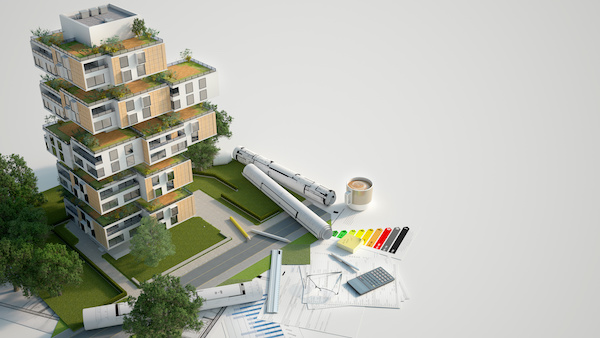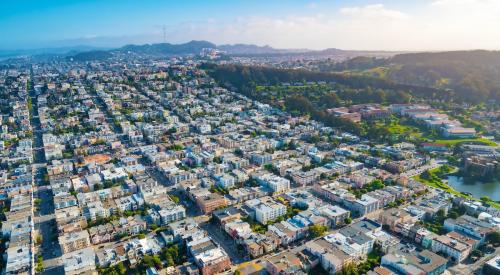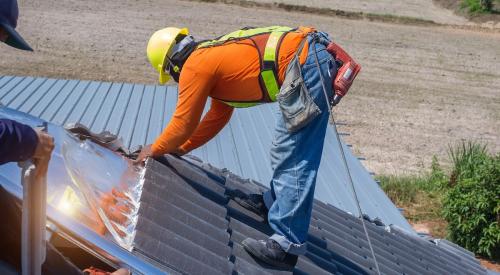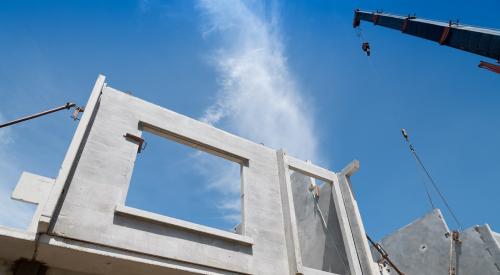A new five-million person city, powered by clean energy and featuring an abundance of green spaces, may become the model for sustainable living. The city plans to be located 80 miles southwest of Beijing, and its plan is spearheaded by the Chinese government, according to Fast Company. Streets will prioritize bikes and those walking on foot, rather than vehicles. Apartments will offer large outdoor balconies with the ability for gardening. Roofs will house vertical farm greenhouses. And all apartments plan to be powered by solar energy. All in all, the community will be designed to manage climate change and pandemics.
Called a “self-sufficient city,” the design also responds to the pandemic. Apartments are designed with space to work from home in future outbreaks; if the lockdown isn’t as strict, people can use coworking spaces in each apartment building. The abundance of onsite food production offers fresh daily produce. Terraces give each apartment private outdoor space, and are designed to have a landing zone for future drone deliveries. Manufacturing spaces in the building give residents access to 3D printers and other tools, so they can make parts for repairs in their unit without leaving home.
“We are fighting in the crisis for life and for the climate at the same time,” says Vicente Guallart, the Barcelona-based architect whose eponymous firm designed the mixed-use community. (The design won a competition hosted by the Chinese government, but the next steps for development haven’t been announced yet.) “In 2012, I wrote the book The Self-Sufficient City, arguing that with the digital world, we should reinvent globalization in such a way that we produce resources locally—energy, elements, and things—while we are globally connected.”













